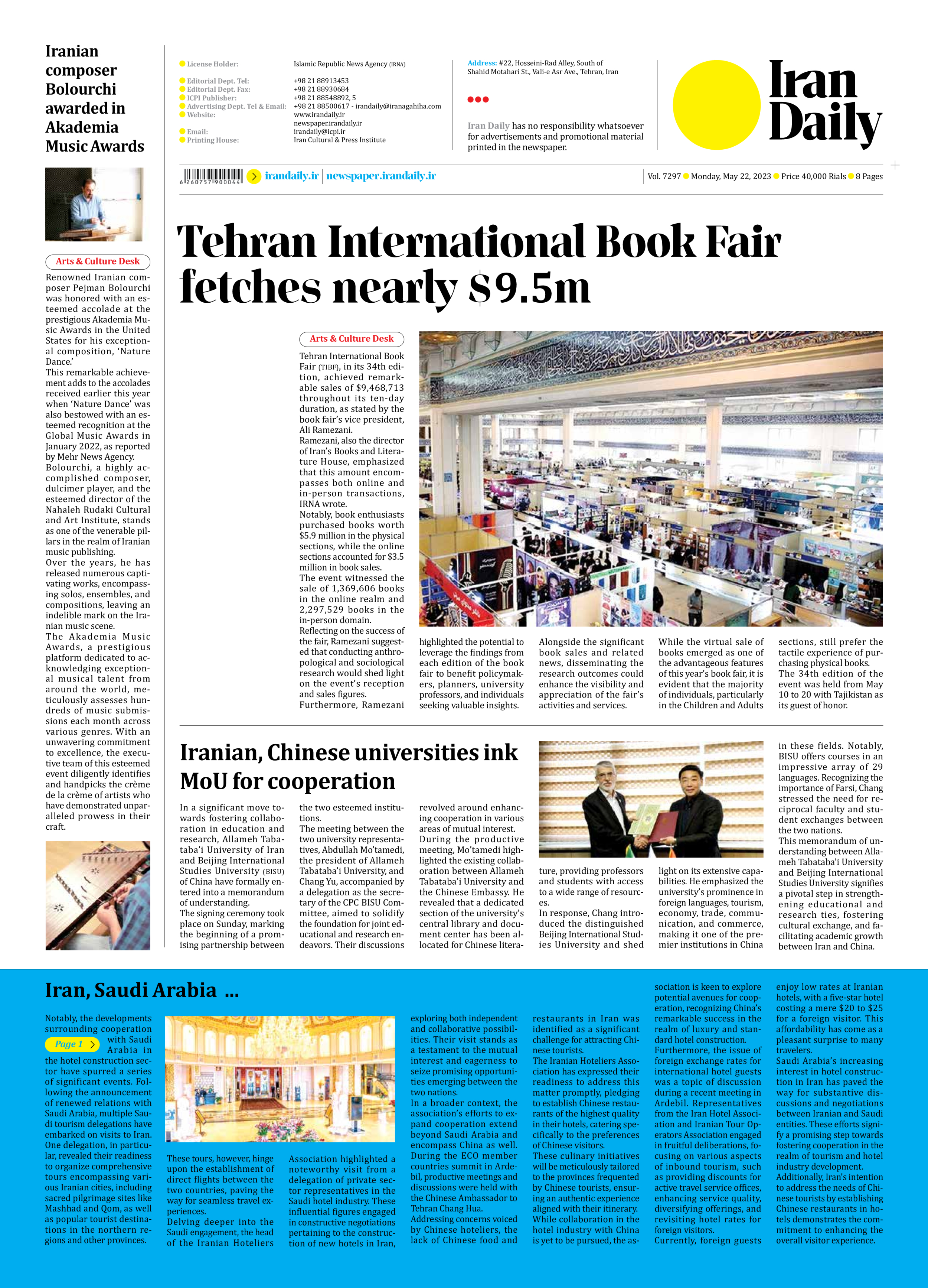
Tehran International Book Fair fetches nearly $9.5m
Tehran International Book Fair (TIBF), in its 34th edition, achieved remarkable sales of $9,468,713 throughout its ten-day duration, as stated by the book fair’s vice president, Ali Ramezani.
Ramezani, also the director of Iran’s Books and Literature House, emphasized that this amount encompasses both online and in-person transactions, IRNA wrote.
Notably, book enthusiasts purchased books worth $5.9 million in the physical sections, while the online sections accounted for $3.5 million in book sales.
The event witnessed the sale of 1,369,606 books in the online realm and 2,297,529 books in the in-person domain.
Reflecting on the success of the fair, Ramezani suggested that conducting anthropological and sociological research would shed light on the event’s reception and sales figures.
Furthermore, Ramezani highlighted the potential to leverage the findings from each edition of the book fair to benefit policymakers, planners, university professors, and individuals seeking valuable insights.
Alongside the significant book sales and related news, disseminating the research outcomes could enhance the visibility and appreciation of the fair’s activities and services.
While the virtual sale of books emerged as one of the advantageous features of this year’s book fair, it is evident that the majority of individuals, particularly in the Children and Adults sections, still prefer the tactile experience of purchasing physical books.
The 34th edition of the event was held from May 10 to 20 with Tajikistan as its guest of honor.







